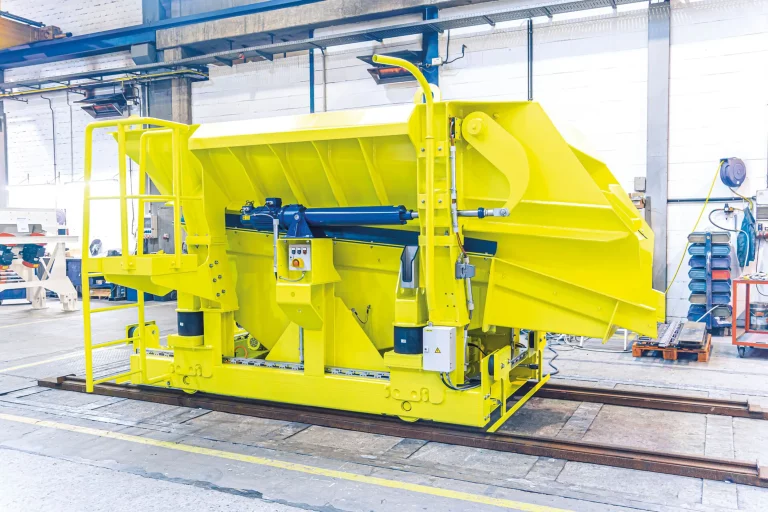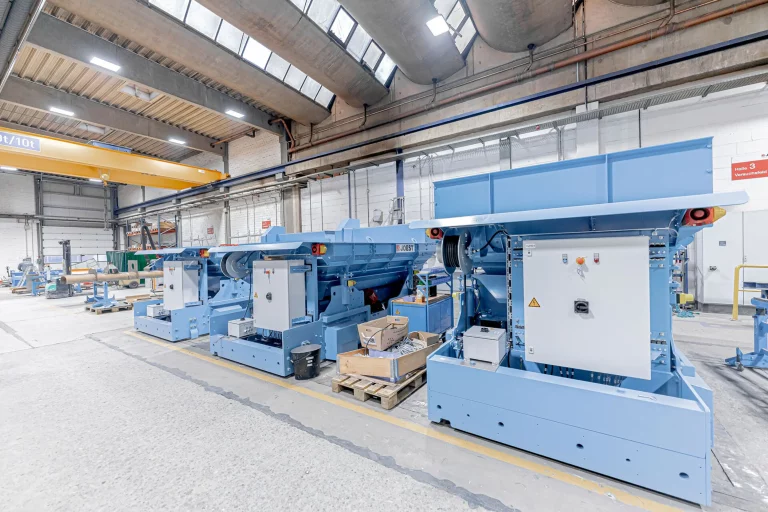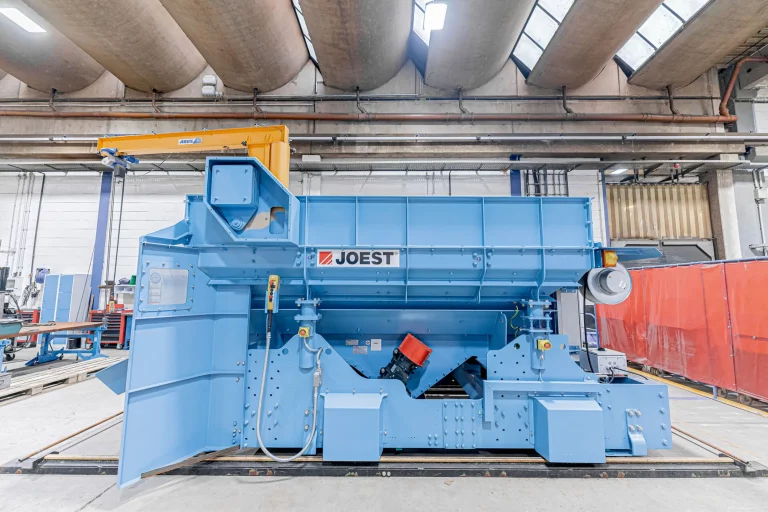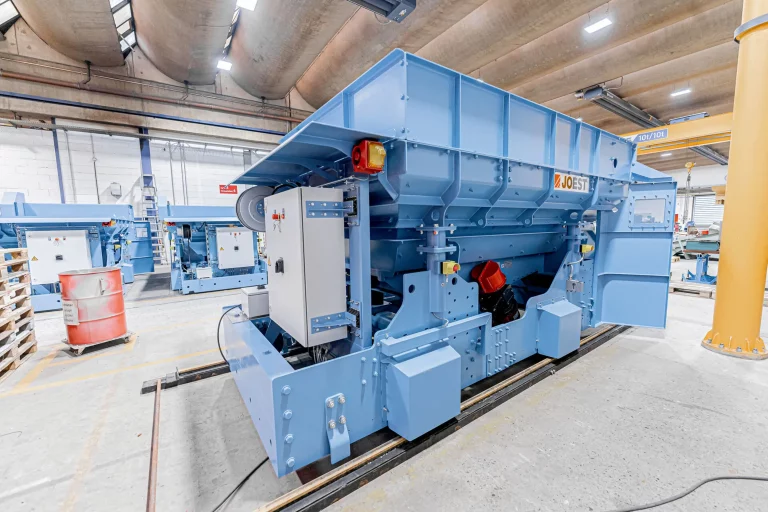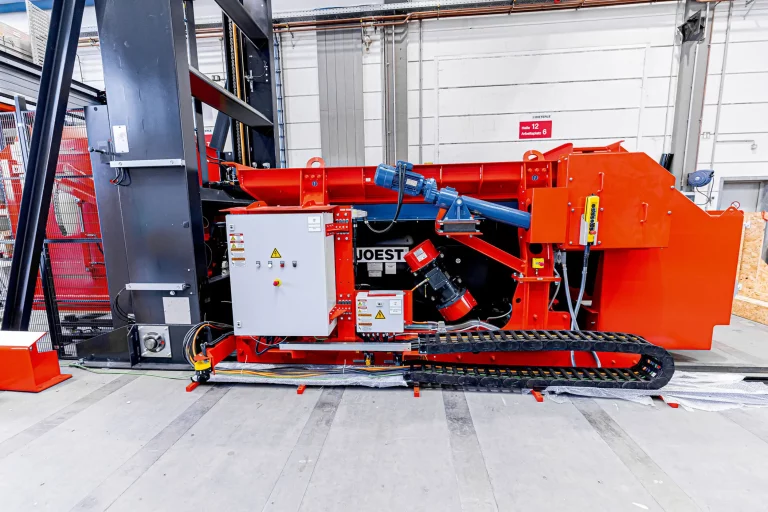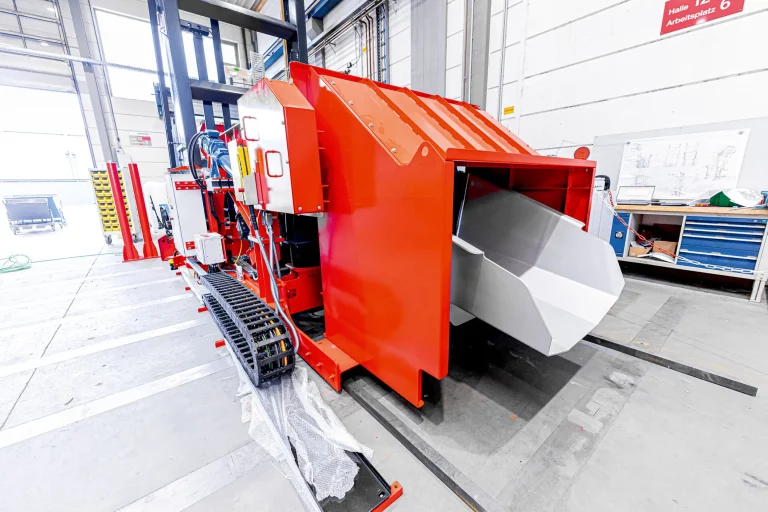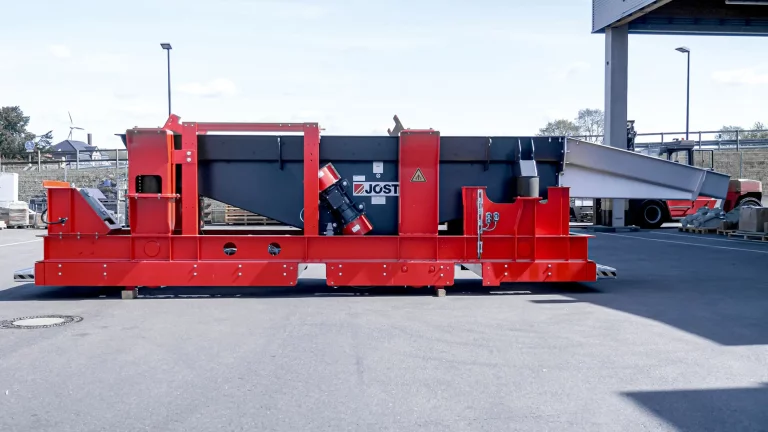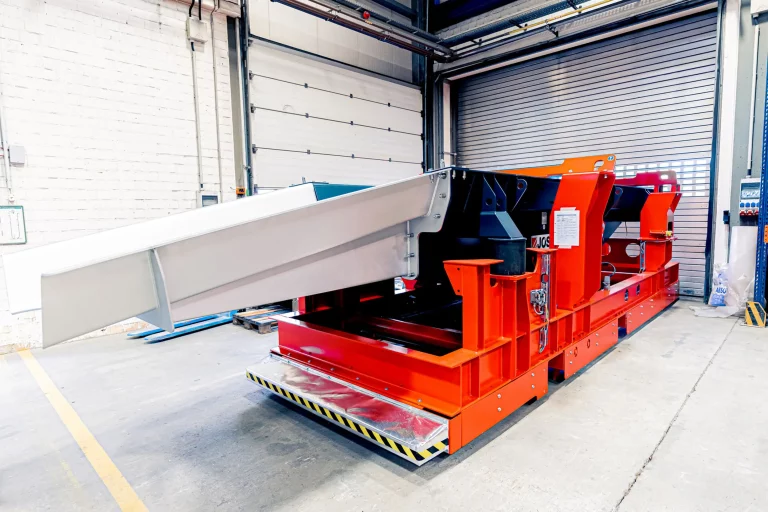Charging feeder
FUNCTION
JOEST charging machines combine precise conveying technology with high mobility for use in demanding foundry environments. Their operation follows a three-step process designed for seamless integration:
Loading
The charging machine is loaded at a designated station, for example using wheel loaders, forklifts, cranes, or automated lift-and-tip systems. The robust hopper receives the bulk material or charge and prepares it for conveying.
Positioning
The machine then travels manually or automatically toward the furnace – longitudinally, transversely, or diagonally depending on the design. Movement is controlled via integrated chassis systems and can be tailored to the spatial layout of the foundry.
Conveying and Discharging
Once in position, the integrated vibrating conveyor system is activated. Material is fed into the furnace in a controlled, continuous, and low-dust manner. The specially designed trough geometry ensures complete emptying of the hopper and a consistent material flow.
This clearly structured process ensures an efficient, reproducible charging operation – with high operational reliability and minimal personnel requirements.
Product details
Our charging feedersfeature a rugged design, modular construction, and flexible configuration options. With loading capacities ranging from 2 to 35 m³, they can be precisely tailored to meet the requirements of various furnace types and production capacities.
At the core is a high-performance vibrating trough, whose special geometry ensures uniform and residue-free material conveying. The hopper and trough can be manufactured in durable sandwich construction – this not only reduces noise emissions but also increases the structural stability of the unit.
Depending on the application, the undercarriages can be designed for longitudinal travel, transverse travel, or both. Various power supply options are available depending on the installation site – including cable reel, drag chain, or battery operation.
Control is provided by a modern PLC-based system, which can be supplemented with industrial PCs offering interfaces for process visualization. The modular design with standardized components facilitates maintenance and spare parts availability – making it ideal for the demanding continuous operation of foundries.
Options
- Additive storage container
- Load cells
- Slewing ring with pivotable trough
- Lateral, longitudinal, and diagonal movement – or combinations thereof
- Geometry adapted to furnace and furnace platform
- Discharge gate to prevent material overshoot
- ATEX-compliant design available on request
- Discharge-optimized hopper and trough geometry to prevent blockages
- Standard and customized designs
- High degree of automation possible
Fields of Application
Induction furnaces, crucible furnaces, rotary drum furnaces, rotary kilns, shaft furnaces
Iron, steel, non-ferrous metals (e.g. copper, brass), aluminum, stainless steel
Foundries with automated or semi-automated charging lines
Systems with changing charging points or variable recipes
Use in high ambient temperatures and with abrasive materials
Space-critical areas with limited access routes
Equipment Options
JOEST offers a wide range of practical options for charging machines, allowing each system to be precisely adapted to on-site requirements:
Slewing ring with pivotable trough
Flexible swiveling of the trough to charge multiple furnace positions – saves space and increases process reliability.
Weighing frame
Integrated weight detection directly in the charging machine – ideal for precise dosing and recipe control
Discharge gate
Prevents uncontrolled discharge of material and enables precisely controlled emptying.
Additive storage container
Separate filling of additives – can be directly combined with main material for customized batch mixes.
ATEX-compliant design
Safe operation even in potentially explosive areas – tested and certified according to applicable regulations.
Battery-powered energy supply
Independent of stationary power – ideal for large or complex plant layouts.
Sound-insulated sandwich construction
Significantly reduces noise emissions – thanks to a double-walled hopper and trough design with insulating intermediate layer.
PLC control with visualization
Reliable and user-friendly process control – optionally with interfaces for plant automation.
Advantages
Flexible chassis design
Longitudinal, transverse, or combined travel paths allow optimal adaptation to various plant layouts.
Foundry-grade construction
Robust design with heat-resistant and highly wear-resistant components – engineered for continuous operation under extreme conditions.
Metered material discharge
Uniform, controlled material flow ensures safe and clean furnace charging – even with challenging bulk materials.
Sound-insulated construction
Double-walled design of hopper and trough reduces vibrations and minimizes noise emissions during operation.
Modular design with standardized components
Simplifies maintenance, spare parts supply, and future upgrades – for maximum system availability.
Customized power supply
Available with cable reel, drag chain, or battery – tailored to on-site infrastructure and mobility requirements.
Reliable control technology
PLC-based control system with visualization – optionally with interfaces for plant automation.









